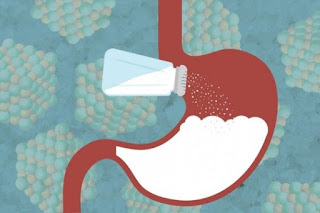Gastrointestinal bleeding (GIB) represents a potentially life-threatening condition and is a main indication for gastrointestinal endoscopy. Its incidence is given with roughly 150 patients per 100000 population and year, with a mortality rate of still 10% [1, 2]. Various bleeding sources may be identified and they may be induced either because of an underlying morbidity with ulcerative and nonulcerative lesions, respectively (e.g., ulcers, esophageal varices, and gastrointestinal vascular malformations), and malignancy or as a consequence of iatrogenic interventions (e.g., postpolypectomy bleeding) [3]. In addition, GIB becomes an emerging issue in the light of increasing numbers of disease entities requiring strict anticoagulant therapy with increasing use of new direct oral anticoagulants (DOAC) [4].
Hemostasis can be achieved according to the type of lesion and extent of bleeding by injection of saline, diluted epinephrine solution, macrogollaurylether (e.g., aethoxysklerol), the application of various types of through-the-scope (TTS) or over-the-scope clips (OTSC), or using argon-plasma-coagulation and other thermic coagulation procedures [5]. Despite these possibilities, 10–30% of all patients remain in which an endoscopic hemostasis cannot be obtained, or in which a prompt recurrence of the bleeding occurs [2, 6–8].
Recently, sprayable powders for induction of immediate bleeding stop were introduced in gastrointestinal endoscopy. The latest innovative system introduced into clinical use is the EndoClot system (EndoClot Plus Inc., Santa Clara, CA, USA) which consists of starch, while the Hemospray (Cook Medical, Winston-Salem, NC, USA) consisting of an inorganic powder is the most widely used chemical in this regard [5]. It exerts multimodal mechanisms to achieve hemostasis, becoming cohesive and adhesive after coming in contact with moisture hence forming a stable mechanical barrier, sealing the bleeding site. Due to its composition, it is neither absorbed nor metabolized within the mucosa, hence minimizing the risk of systemic toxicity [6].
Previous studies described Hemospray as a feasible and possible new option to obtain rapid hemostasis during gastrointestinal endoscopy either as primary treatment option [9–14] or as a salvage indication, when refractory bleeding persists despite application of other conventional methods (e.g., injection therapy and clips) [11, 14]. In these studies with defined inclusion and exclusion criteria, a high initial success of up to 100% is reported. However, rebleeding rates, depending on the bleeding source of up to 38.9%, are noted in literature [5]. The aim of this paper is to report the indications, experience, results, and adverse events from the use of Hemospray between August 2013 and November 2014 from a high-volume endoscopy university center investigating unselected consecutive emergency patients.Prof .DRRAM,HIV /AIDS,HEPATITIS ,SEX DISEASES & WEAKNESS expert,New Delhi,India, profdrram@gmail.com,+917838059592,+919832025033,ON WHATSAPP
- Kidney stones universally present hazard in north india,dillution by water prevent it
- Steroid and placebo effect equally for mild persisting asthma with low sputum eosinophils
- Government wants to fix public healthcare staff shortages with ayush docs: will it work?
- Plea in hc for payment of salaries of edmc, north mcd teachers and doctors
- 7 indian pharma companies named in us lawsuit over inflating generic drug prices
- Woman in up dies after explosion in her mouth during treatment,what is diagnosis?
- Woman in up dies after explosion in her mouth during treatment,what is diagnosis?
- Woman in up dies after explosion in her mouth during treatment,what is diagnosis?
- Air pollution ! mothers organising rally in london,anaesthetist choosing gas,will india follow?
- Cardiac arrest is always not sudden as understood -a study


 Comments (
Comments ( Category (
Category ( Views (
Views (